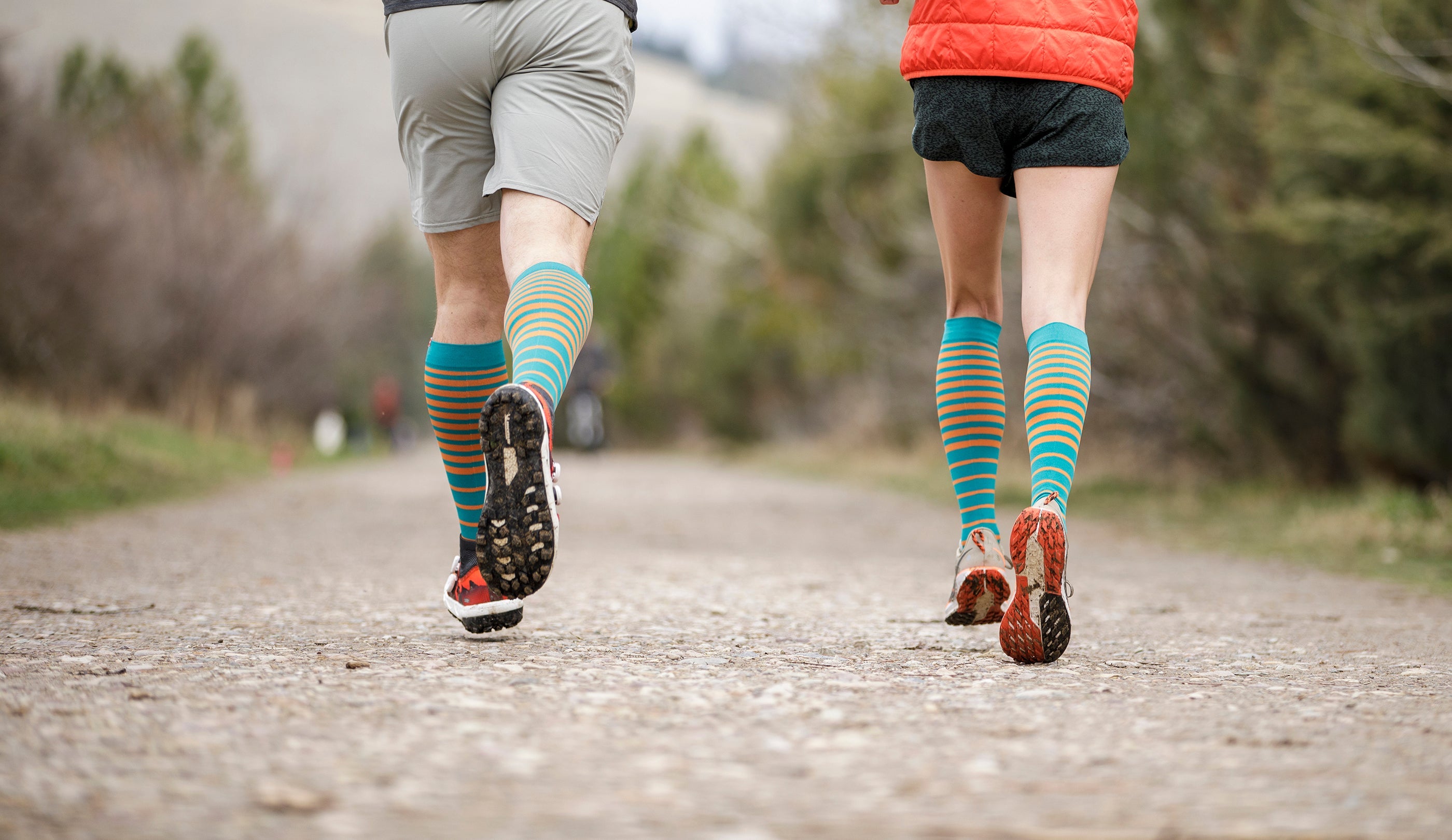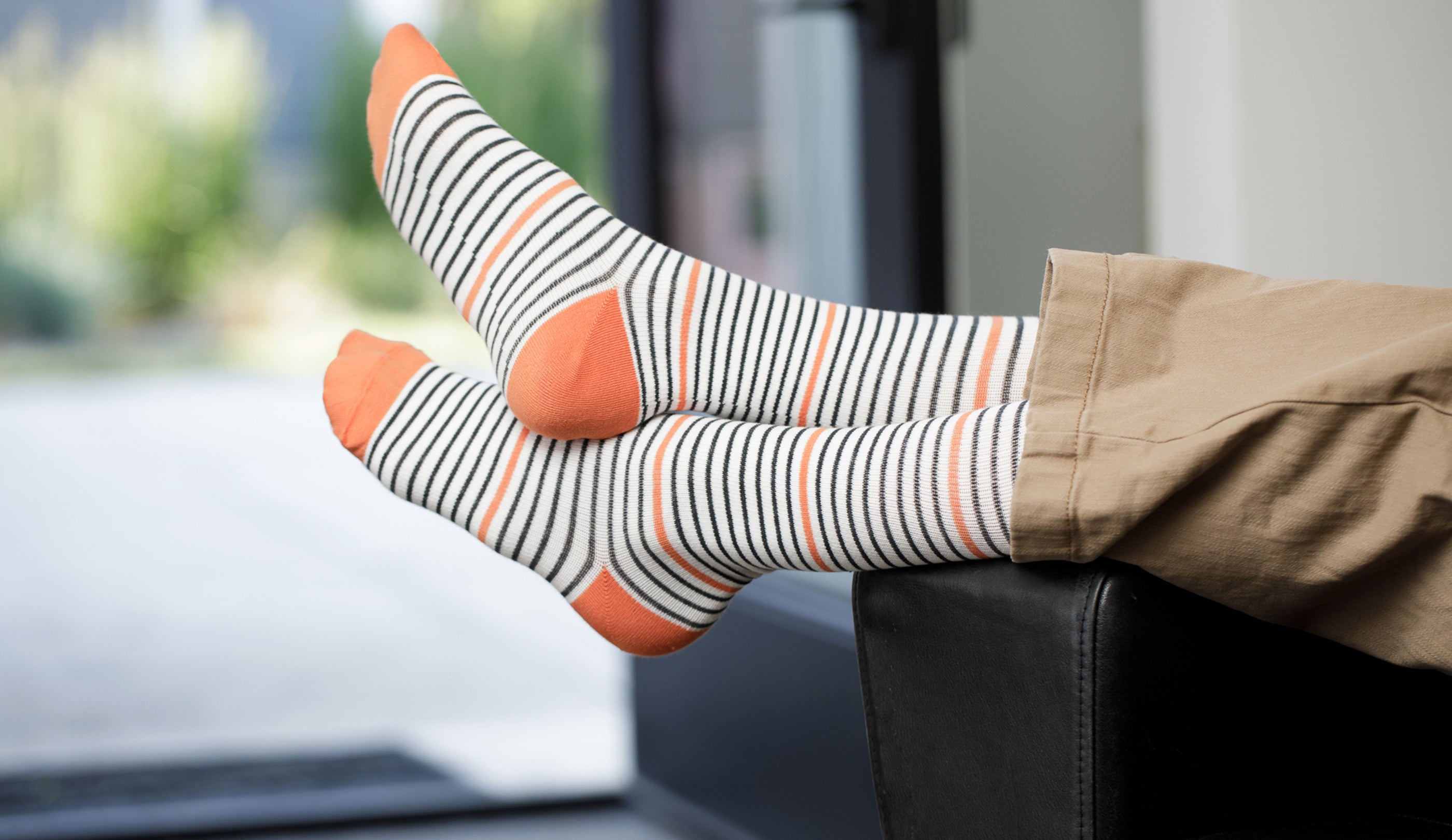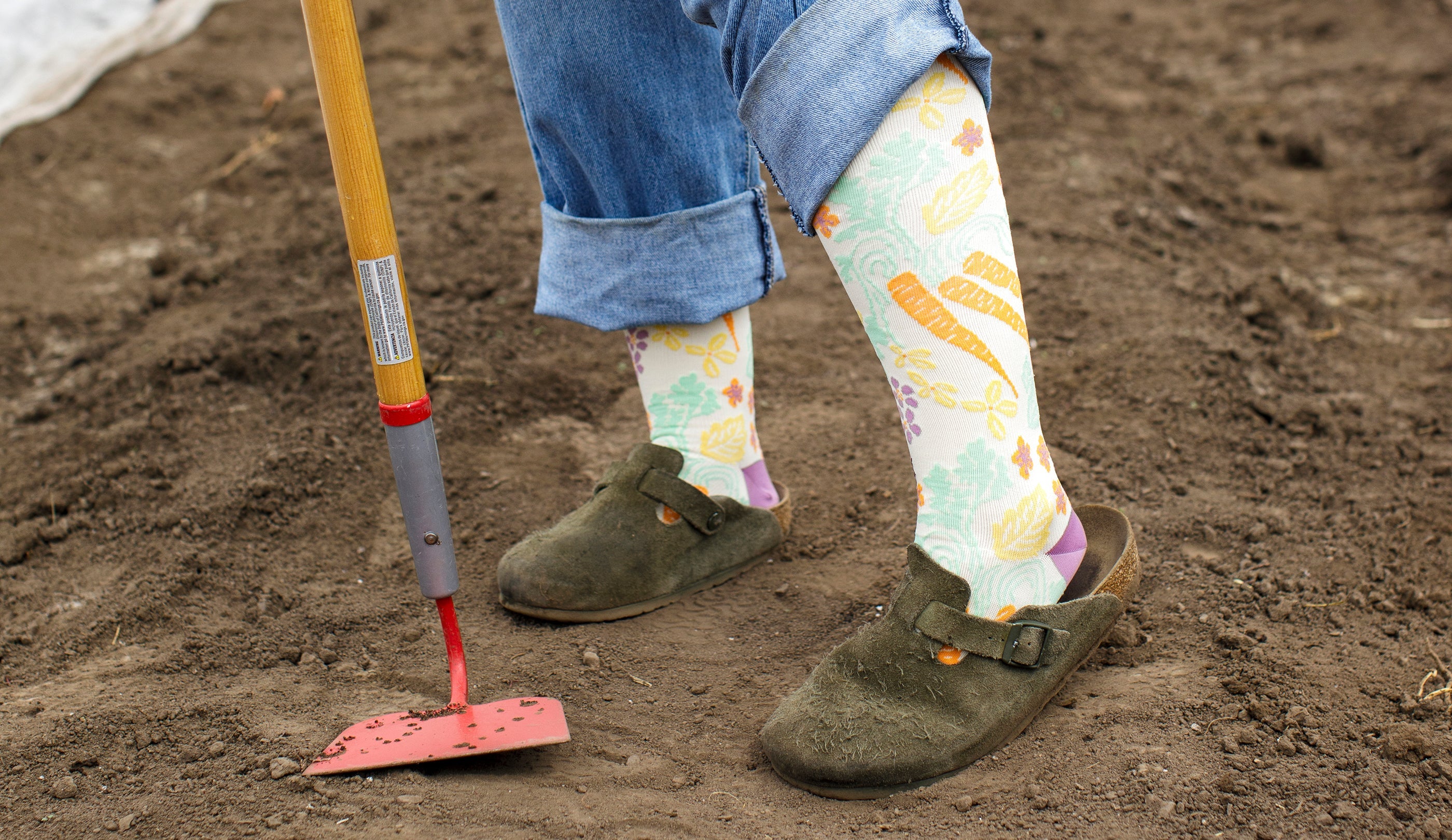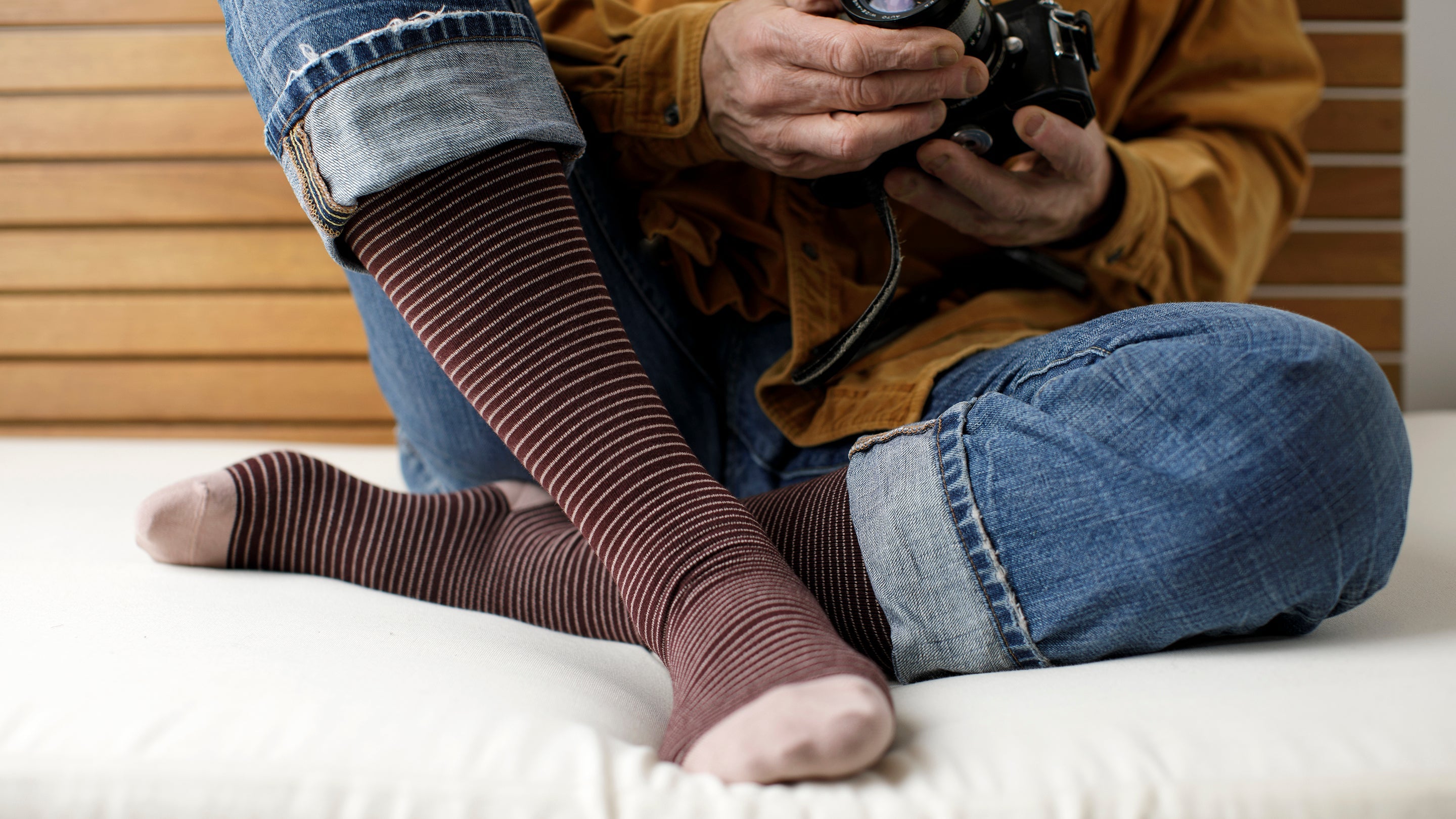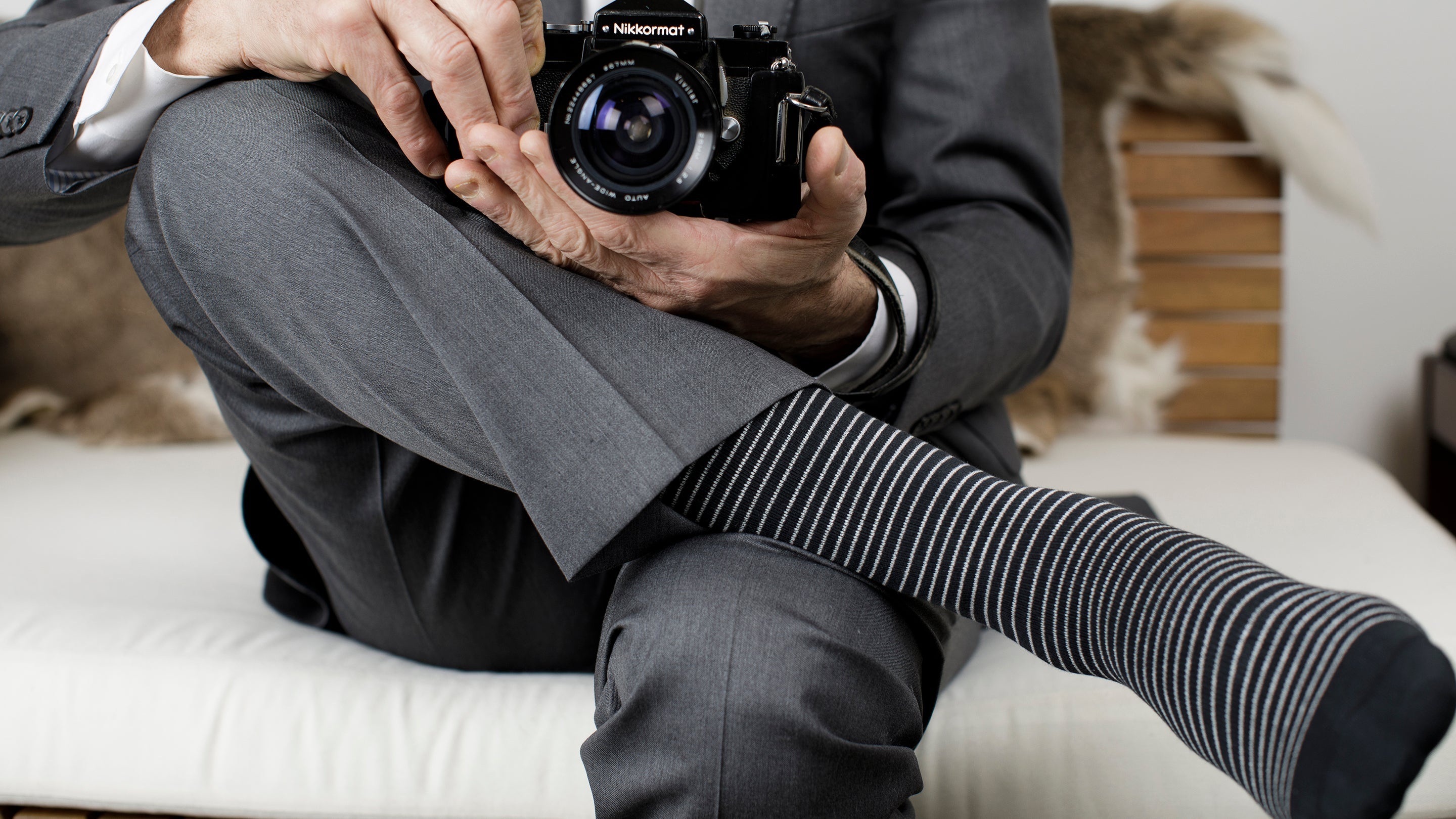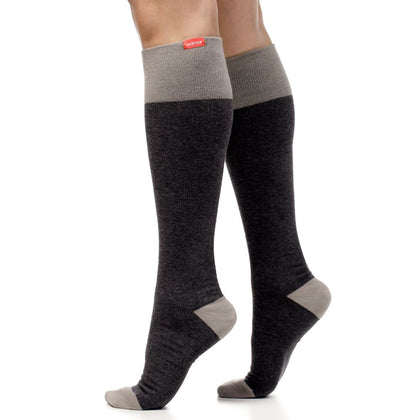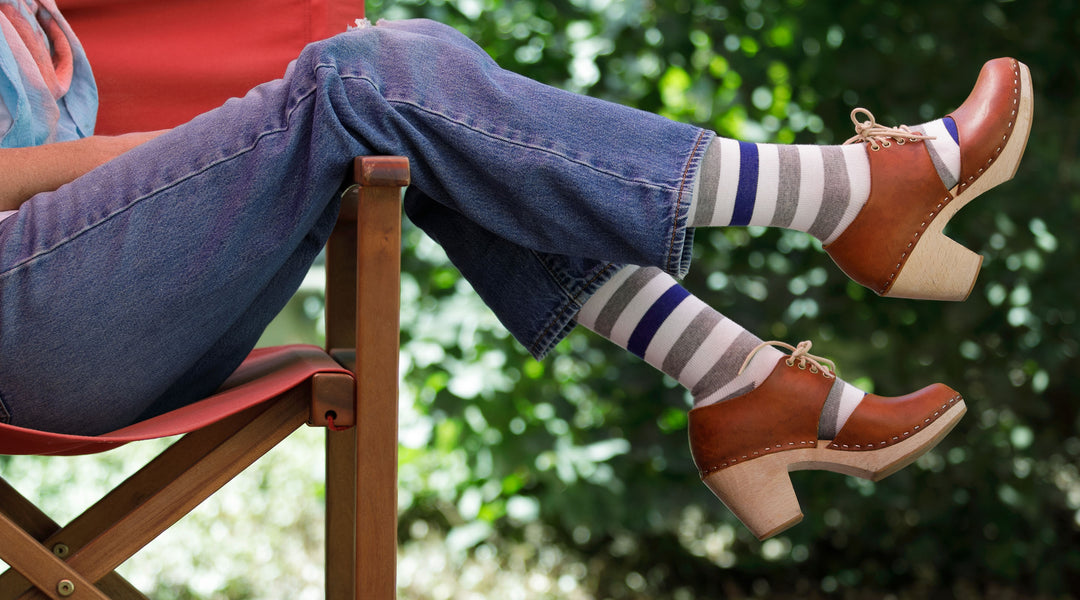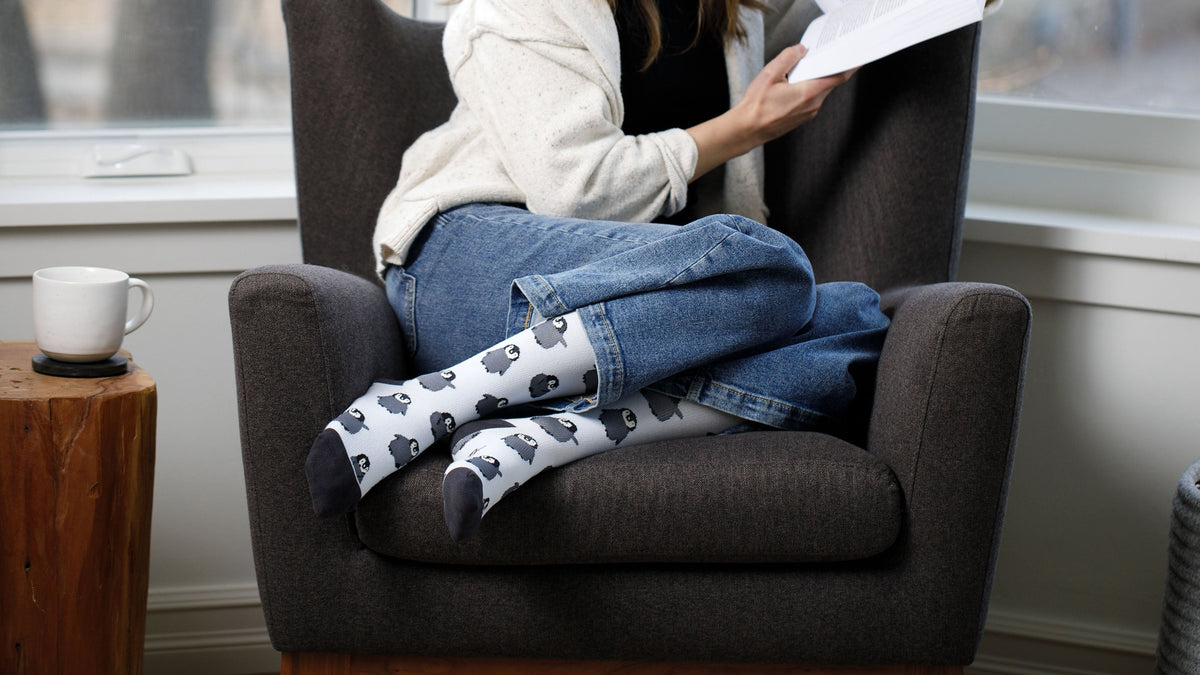

Leg edema or painful swelling is often caused by poor circulation of blood and lymphatic fluids through the body, which often leads to them pooling in the lower limbs. When lymph (or lymphatic fluid) is not effectively pumped through the lymph vessels to cause it to accumulate in the limbs, patients suffer from lymphedema. This can be just as uncomfortable as blood pooling and lead to situations where the affected limb becomes difficult to move. But, just as with excess blood, excess lymph fluid can be moved along with the help of compression therapy.
Can compression help lymphatic drainage, and how do compression socks work if you are looking to reduce the symptoms of lymphedema? Thanks to the therapeutic pressure they apply to the legs, compression socks and leggings facilitate lymph fluid drainage and support the limbs during daily activities.
Read on to find out the benefits of compression for lymphatic drainage, including who should use it and how to choose the best pair of compression socks or tights for you.
Do Compression Socks and Leggings Help with Lymphatic Drainage?
Yes, compression garments are known to help ease lymphatic drainage. They control and reduce the swelling caused by a buildup of lymph fluid in the body, by applying therapeutic pressure onto the limbs and encouraging movement of lymphatic fluids. The UK National Health Service recommends using a range of compression bandages or garments to stimulate more effective lymph drainage and support exercise, which will also encourage fluid to move out of the limbs. Further, evidence from dozens of research studies show that compression socks or tights are beneficial for people suffering from lymphedema or other lymphatic disorders, as shown by this 2017 meta-analysis.
Moreover, compression socks and leggings support the limbs, reducing the pressure of the swelling on the body overall. They help make daily activities easier and more enjoyable, while also reducing the negative impacts of walking on the muscles and joints.
How Does Compression Support Lymphatic Flow?
Compression garments stimulate lymphatic flow by applying gentle pressure on the tissues and lymphatic vessels. This helps move fluid towards the larger lymphatic vessels and lymph nodes, reducing swelling and improving circulation.
The benefits of compression for lymphatic circulation include:
- Increasing therapeutic pressure on the skin and tissues to reduce swelling. This fights the fluid buildup in between cells (the cause of lymphedema) and acts like a massage, to reduce swelling.
- Improving fluid circulation and preventing backflow. Lymphatic fluid is propelled through the valves that keep it moving in one direction (upwards). Compression garments enhance both venous and lymphatic return, which increases the natural “pump” actions that propel fluid through one-way valves, according to a 2021 article that assessed lymphedema treatments.
- Enhancing tissue health. The Lymphoedema Framework’s “Best Practice for the Management of Lymphoedema” references the benefit of reducing edema (swelling) on overall skin and tissue health. Compression therapy improves oxygenation and reduces the risk of further damage, such as cellulitis.

Who Can Benefit from Compression for Lymphatic Drainage?
Good lymphatic drainage can improve the quality of life of patients suffering from lymphedema (swelling from lymph fluid buildup), which is the symptom of several medical conditions (including cancer). However, in people without these conditions, swelling can even occur when you sit or stand for a long time, when you exercise or are recovering from surgery, or even when you cope badly with the heat.
People With Certain Medical Conditions
Lymphedema is common for people that have health conditions like breast cancer, chronic venous insufficiency, fibromyalgia, lipedema, and rheumatoid arthritis. All of these can lead to a congested lymphatic system, which can cause symptoms like bloating, swelling, brain fog, fatigue, or others.
In these cases, your doctor will prescribe lymphatic drainage massage, as well as potential exercises and compression garments or bandages. Full-length compression tights or leggings or compression socks can be prescribed, with the extra compressive 30-40 mmHg level.

Those Who Sit or Stand for Long Hours
If you sit or stand for long periods of time, for example at work or when traveling long-distance (most often on planes), you may experience swelling and discomfort. This is usually caused by venous blood pooling primarily. This means your blood is not traveling to the heart well because of the gravitational pressure.
However, if you are susceptible to lymphedema because of underlying health conditions, have recently undergone surgery, or have had treatment for an illness that causes lymphedema, you are at an increased risk of developing lymph pooling. In either case, wearing compression socks or leggings will boost lower limb blood circulation, reducing the impact of not moving on your lower body.
Individuals Recovering from Exercise or Surgery
Swelling in the lower limbs can be caused by exercise or surgery, where inflammation or blood or lymph fluid pooling can lead to edema. We refer to exercise-induced edema, where athletes suffer from muscle soreness, irritation, and swelling after difficult workouts. In these rare cases, compression is great for both boosting circulation and stimulating lymphatic drainage, as well as for massaging and soothing sore limbs. So, wear compression gear after exercising – scientific studies show that compression socks improve exercise recovery.
After cancer surgery, the Mayo Clinic explains that lymph nodes are often removed, which can negatively affect the body’s natural ability to drain lymph fluid. Radiation treatment can also cause scarring and inflammation of the lymph nodes or vessels, leading to edema. Wearing compression garments in conjunction with intermittent pumps and exercise can also reduce swelling and improve symptoms in these cases.
Anyone Looking for Everyday Wellness Support
Lymphatic drainage massage can support a general sense of wellbeing and is favored by many who wish to relax, reduce fluid retention, and improve circulation. Wearing compression socks can contribute to this in a stylish, versatile way, since they are easy to wear, can fit with any outfit, and bring a pop of color while also delivering multiple wellness benefits.

How Does the Lymphatic System Work?
The lymphatic system is a network of vessels within the body, which drains fluid called lymph. This is leaked from blood vessels into the tissues, being emptied back into the bloodstream through the lymph nodes.
This system has multiple roles:
- Managing fluid levels in the body
- Regulating pressure throughout the body
- Reacting to bacteria (as it is part of the immune system)
- Dealing with cancer cells
- Dealing with (and flushing out) cell products that could lead to diseases
- Absorbing some of the fats from our diet from the intestine.

What Causes Poor Lymphatic Drainage?
The lymphatic system is important to circulation because our blood vessels are always under pressure, which helps push nutrients and oxygen throughout the body. Anything that leaks out into the tissues needs to be removed via the lymphatic system, so when it does not work properly, problematic swelling occurs.
Poor lymphatic drainage can be brought on by the following:
- Breast cancer surgery, because lymph nodes can be removed, and damage of lymph vessels is common
- Pelvic surgery, where some pelvic lymph nodes are removed
- Radiation therapy, which can cause scarring and damage to the lymphatic system
- Physical trauma - such as an accident, which has the potential to damage lymphatic vessels under the skin
- Infection
- Obesity - excess fat can put pressure on lymph nodes and vessels
- Inactivity - swelling in the legs can lead to poor lymphatic drainage
- Tumors can block the lymphatic system
- Heart conditions
- Blood vessel issues
- Kidney disease
What Are Some Common Signs of Poor Lymphatic Drainage?
How can you know if the swelling and discomfort you are experiencing is due to poor lymphatic drainage?
Usually, symptoms are both physical and mental, which will help you differentiate from edema or swelling caused by poor blood flow, heat, or other factors. In poor lymphatic drainage, here are some tell-tale signs:
- Swelling in any part of the body, which may come and go at first, then can become more persistent. In the legs, the swelling can cause pain, restricted range of motion, skin infections, changes in the skin texture, folds developing in the skin, and pitting
- Skin problems, including dry and itchy skin, rashes, and other issues such as cellulitis and increased deposit of subcutaneous fat
- “Brain fog” and headaches, caused by inadequate lymphatic and sinus drainage
- Bloating and digestive issues
- A pervasive feeling of fatigue and/or stress
- Joints feel particularly tight or inflexible.
If you are dealing with any of these or with frequently recurring swelling, particularly in only one limb, you should speak to a doctor to ensure you receive the correct diagnosis.
How to Choose the Right Compression Garment for Lymphatic Support
Along with intermittent pump compression and lymphatic drainage massage, compression tights and socks are known to make a positive difference on your wellbeing when you suffer from lymphedema. They are comfortable, easy to wear, and extremely versatile, so you can enjoy them anytime, anywhere. Here is how to choose yours.
Compression Socks vs Compression Leggings
Traditional knee-high compression socks boost circulation and lymphatic drainage in the lower limbs, from the ankles to just below the knee. This helps the whole body, however, as it prevents fluid and blood from pooling in the lower legs and impairing the circulatory system. It also boosts energy levels and provides additional support for the joints.
For full coverage and to benefit from compression in the thighs, buttocks, and abdominal area, you can then choose compression tights or leggings. With these garments, you not only get the soothing muscle massage and improved circulation benefits, but you can also comfortably wear them as lower-body clothing and look stylish, without anyone knowing you are wearing compression gear. Moreover, compression leggings are great for exercising in, reducing the risk of chafing, skin irritations, or scraping the legs when outside.
Both Vim & Vigr compression socks and leggings are graduated, which means they are tighter at the ankles and slowly decrease pressure up the leg. This stimulates upward blood flow and lymphatic drainage, an added benefit against the push of gravity when you spend a long time sitting or standing.

Finding the Right Compression Level
It is important to understand that not all compression tights and socks apply the same level of pressure. While some people may need prescription-only compression from a medical professional, others could manage poor lymphatic drainage with more casual, everyday compression garments.
At Vim & Vigr, we offer:
- 15-20 mmHg compression for exercising in, relaxing and soothing tired legs, or using when traveling or standing for long periods of time
- 20-30 mmHg for more serious medical conditions, e.g. if you have poor peripheral circulation or need more support for the lymphatic and circulatory system
- 30-40 mmHg - medical grade compression, available on prescription only to those suffering from serious lymphedema or recovering from surgery, among other scenarios.
Comparing Fabric and Material
Finally, do not forget that the fabric of your compression socks and tights play a key role in your comfort levels! We know how important it is to have the appropriate garments for your activity levels or environment, so we offer cotton, nylon, and merino wool compression socks, with variations on nylon, too.
Cotton is great for everyday wear for your favorite compression socks, which can be worn with casual or dressed up outfits. It is soft and breathable, but not particularly good at wicking away moisture.
Nylon is sleek and flexible, which makes it a smart choice for exercising in. We offer our compression tights in nylon, and you can also enjoy compression socks and sleeves. We have also created our choice nylon collection, which is flexible and comfortable, while eliminating the toe seam, and our moisture wick nylon to ensure your feet stay dry and avoid blisters.
Merino wool is recognized for its moisture wicking, antibacterial, and hypoallergenic properties, which makes it an ideal choice if you are suffering from skin irritations and infections. Our merino wool graduated compression socks are also great at regulating temperature, ensuring you stay warm in cold weather, but also letting the feet breathe and keeping them sweat-free in the summer.
Lymphedema, or swelling caused by poor lymphatic drainage, can be a debilitating condition which reduces your range of motion and affects wellbeing. It is usually treated with targeted massage and compression therapy. Thanks to their versatility, ease of use, and effectiveness, compression socks and tights can really be effective for patients suffering from lymphedema, stimulating lymphatic drainage while also providing circulatory benefits and supporting the joints and muscles.

References
Bergmann, A., Baiocchi, J. M. T., & de Andrade, M. F. C. (2021). Conservative treatment of lymphedema: the state of the art. Jornal vascular brasileiro, 20, e20200091. Read it here.
Brennan, M. J., & Miller, L. T. (1998). Overview of treatment options and review of the current role and use of compression garments, intermittent pumps, and exercise in the management of lymphedema. Cancer, 83(12 Suppl American), 2821–2827. Read it here.
Charles, T., Mackintosh, D., Healy, B., Perrin, K., Weatherall, M., & Beasley, R. (2011). Merino wool graduated compression stocking increases lower limb venous blood flow: a randomized controlled trial. Advances in therapy, 28(3), 227–237. Read it here.
Cueni, L. N., & Detmar, M. (2008). The lymphatic system in health and disease. Lymphatic research and biology, 6(3-4), 109–122. Read it here.
Gauckler, P., Kesenheimer, J. S., Leierer, J., Kruus, M., Schreinlechner, M., Theurl, F., Bauer, A., Denicolò, S., Egger, A., Seeber, B., Mayer, G., Kolbinger, F. R., & Kronbichler, A. (2023). Exercise-Induced Fluid Retention, Cardiac Volume Overload, and Peripheral Edema in Ultra-Distance Cyclists. Kidney international reports, 9(1), 152–161. Read it here.
Lymphoedema Framework. (2006). Best Practice for the Management of Lymphoedema. International consensus. London: MEP Ltd. Read it here.
Marqués-Jiménez, D., Calleja-González, J., Arratibel, I., Delextrat, A., & Terrados, N. (2016). Are compression garments effective for the recovery of exercise-induced muscle damage? A systematic review with meta-analysis. Physiology & behavior, 153, 133–148. Read it here.
Mayo Clinic Staff. (2022). Lymphedema: Symptoms & causes. Mayo Clinic Press. Read it here.
Mortimer, P.S., & Gordon, K. (2016) Disorders of the Lymphatic Vessels. Find it here.
Pappas, C. J., & O'Donnell, T. F., Jr (1992). Long-term results of compression treatment for lymphedema. Journal of vascular surgery, 16(4), 555–564. Read it here.
Rabe, E., Partsch, H., Hafner, J., Lattimer, C., Mosti, G., Neumann, M., Urbanek, T., Huebner, M., Gaillard, S., & Carpentier, P. (2018). Indications for medical compression stockings in venous and lymphatic disorders: An evidence-based consensus statement. Phlebology, 33(3), 163–184. Read it here.
